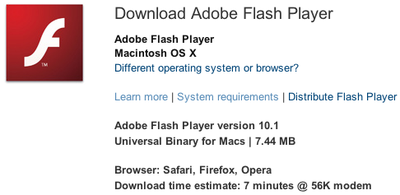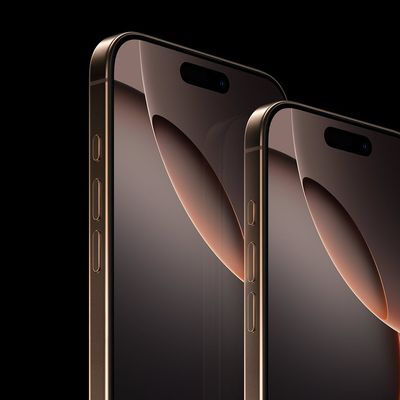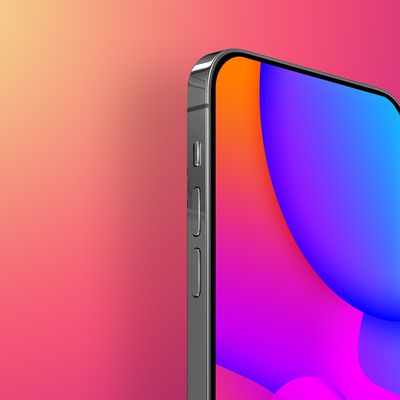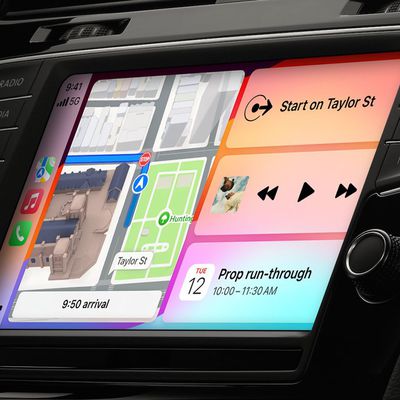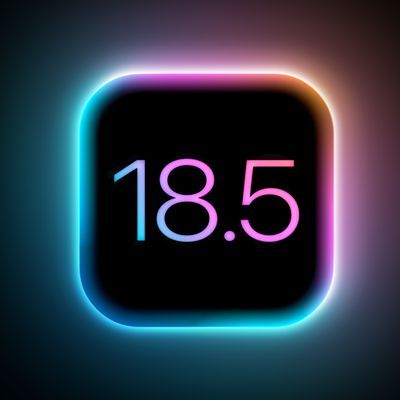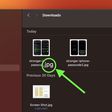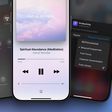Adobe Releases Flash Player 10.1, But Hardware Acceleration on OS X Not Supported
Adobe today released
Flash Player 10.1, the public version of its browser plug-in that has been available for testing in prerelease form since
mid-November. The release, however, does not yet include hardware-accelerated decoding on Mac OS X.
Apple altered its policies in late March to allow third parties such as Adobe to tap into the hardware-accelerated decoding of H.264 video on machines with compatible video cards. Adobe did just that a month later, introducing its "Gala" prerelease version of Flash Player 10.1 for Macs running Mac OS X 10.6.3 and using NVIDIA GeForce 9400M, GeForce 320M or GeForce GT 330M video cards. The Gala functionality, highly anticipated by many users for its ability to free system resources and reduce loads, will be included in a future update to Flash Player 10.1.
Will Gala be generally available with the general availability of Flash Player 10.1 in the first half of this year?
It is expected that the Gala functionality - H.264 hardware decoding on Mac OS X 10.6.3 - will be available in an update following the release of Flash Player 10.1.
A second preview version of Gala remains available through Adobe Labs for those looking to test out the hardware acceleration.
Flash Player 10.1 is intended to integrate the Flash experience across a broad variety of platforms, including smartphones, with support for multi-touch and accelerometer controls. The so-called "Open Screen Project" is consortium of nearly 50 companies looking to bring a consistent Flash experience across all platforms, but Apple is notably absent from the group.
Popular Stories
Despite being more than two years old, Apple's AirPods Pro 2 still dominate the premium wireless‑earbud space, thanks to a potent mix of top‑tier audio, class‑leading noise cancellation, and Apple's habit of delivering major new features through software updates. With AirPods Pro 3 widely expected to arrive in 2025, prospective buyers now face a familiar dilemma: snap up the proven...
Apple's iPhone development roadmap runs several years into the future and the company is continually working with suppliers on several successive iPhone models simultaneously, which is why we often get rumored features months ahead of launch. The iPhone 17 series is no different, and we already have a good idea of what to expect from Apple's 2025 smartphone lineup.
If you skipped the iPhone...
Apple is preparing a "bold" new iPhone Pro model for the iPhone's 20th anniversary in 2027, according to Bloomberg's Mark Gurman. As part of what's being described as a "major shake-up," Apple is said to be developing a design that makes more extensive use of glass – and this could point directly to the display itself.
Here's the case for Apple releasing a truly all-screen iPhone with no...
While the iPhone 17 Pro and iPhone 17 Pro Max are not expected to launch until September, there are already plenty of rumors about the devices.
Subscribe to the MacRumors YouTube channel for more videos.
Below, we recap key changes rumored for the iPhone 17 Pro models as of April 2025:
Aluminum frame: iPhone 17 Pro models are rumored to have an aluminum frame, whereas the iPhone 15 Pro and ...
If you have been experiencing issues with wireless CarPlay in your vehicle lately, it was likely due to a software bug that has now been fixed.
Apple released iOS 18.4.1 today, and the update's release notes say it "addresses a rare issue that prevents wireless CarPlay connection in certain vehicles."
If wireless CarPlay was acting up for you, updating your iPhone to iOS 18.4.1 should...
This week saw rumor updates on the iPhone 17 Pro and next-generation Vision Pro, while a minor iOS 18.4.1 update delivered not just security fixes but also a fix for some CarPlay issues.
We also looked ahead at what else is in Apple's pipeline for the rest of 2025 and even the 20th-anniversary iPhone coming in 2027, so read on below for all the details on these stories and more!
iPhone 17 ...
Apple seeded the third beta of iOS 18.5 to developers today, and so far the software update includes only a few minor changes.
The changes are in the Mail and Settings apps.
In the Mail app, you can now easily turn off contact photos directly within the app, by tapping on the circle with three dots in the top-right corner.
In the Settings app, AppleCare+ coverage information is more...
